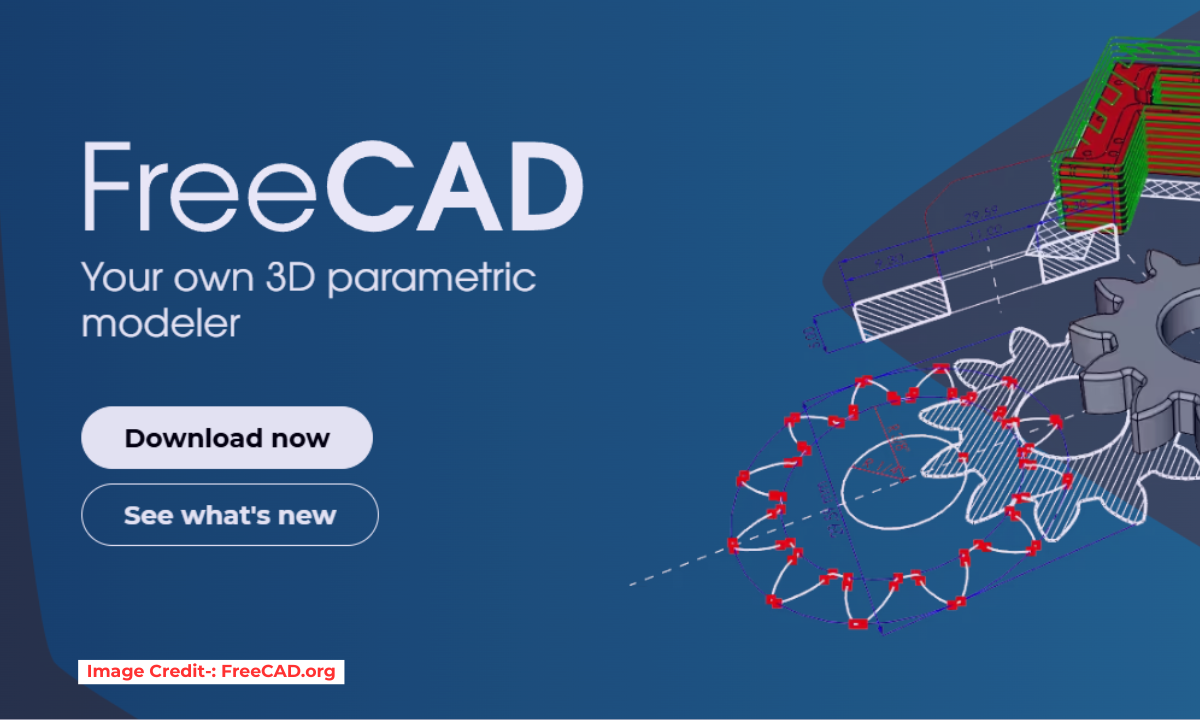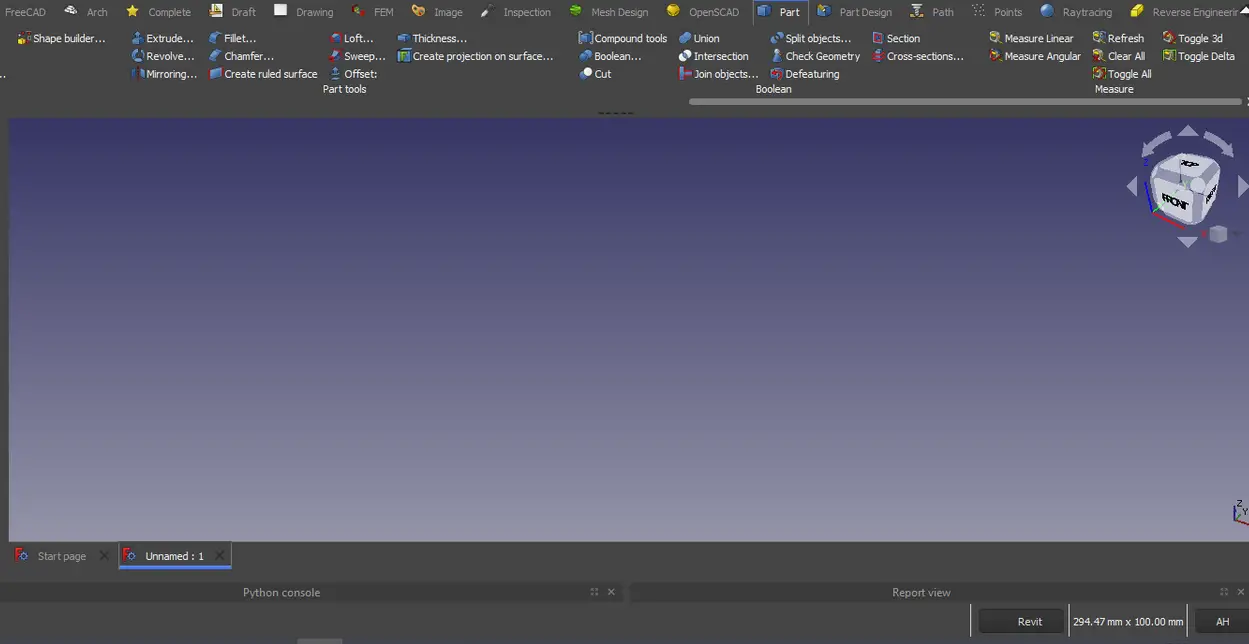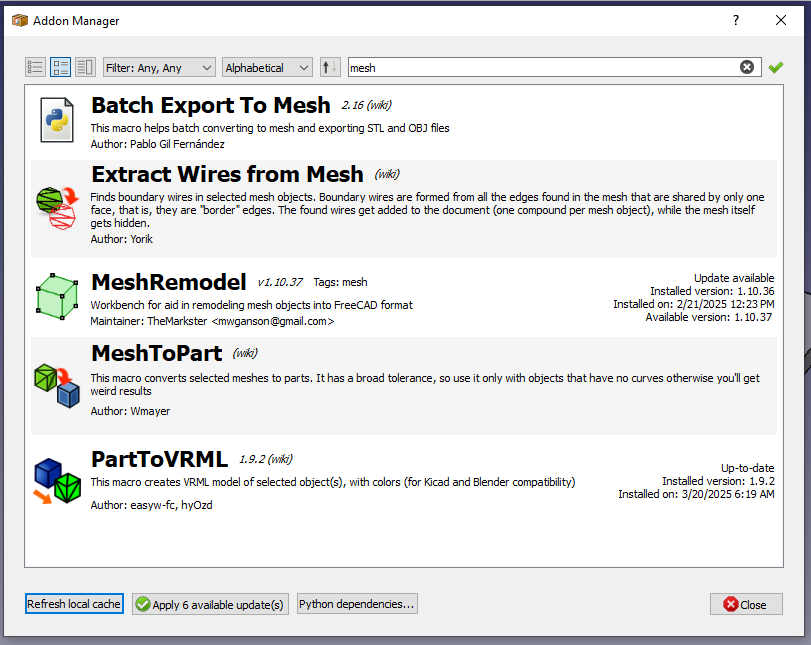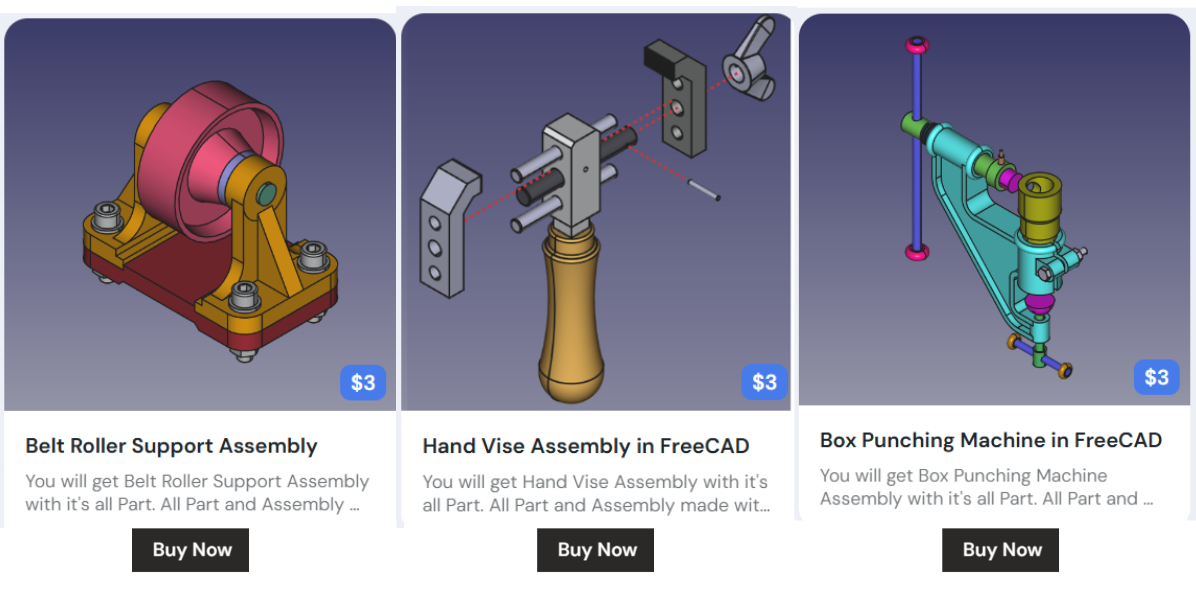
The future of FreeCAD appears promising as the open-source parametric 3D modeling software continues to gain popularity and recognition in professional engineering and design communities. With a growing number of developers contributing to its code base, FreeCAD is constantly being improved with new features and functionality, making it a competitive alternative to proprietary CAD systems. The software’s commitment to open standards and interoperability ensures compatibility with other industry-standard tools, enabling seamless integration into existing workflows.
Related posts:
- Enhance your Workflow: Essential FreeCAD Tips for Faster Modeling
- Time-Saving Benefits of FreeCAD Macros for Task Automation
- Getting Started with FreeCAD: Your No-Cost Solution for 3D Design
As advancements in technology continue to drive innovation in the field of computer-aided design, FreeCAD is well-positioned to evolve alongside industry trends and meet the evolving needs of professionals across various disciplines. With a dedicated user community providing feedback, support, and resources, FreeCAD stands poised for continued growth and success in the realm of free CAD software. FreeCAD has come a long way since its inception, and its future looks promising with ongoing development, community contributions, and increasing adoption. Here’s a look at what the future might hold for FreeCAD:
1. Enhance FreeCAD User Experience-:

FreeCAD developers enhance user experience through continuous improvements in the software’s functionality, usability, and performance. They actively engage with the user community to gather feedback, address issues, and prioritize new features based on user needs. By taking a user-centered approach to development, FreeCAD developers ensure that the software meets the requirements of its diverse user base. Additionally, they adhere to best practices in interface design and interaction patterns to create an intuitive and responsive user interface.
Through rigorous testing and quality assurance processes, developers strive to deliver a stable and reliable product that empowers users to efficiently create 3D models and designs. Overall, FreeCAD developers are dedicated to enhancing the user experience by delivering a feature-rich software solution that is accessible, efficient, and easy-to-use for professionals across various industries.
- Improved UI/UX: Future versions of FreeCAD are likely to feature a more polished and intuitive user interface, making it easier for beginners and professionals alike.
- Customizable Workbenches: Enhanced customization options for toolbars and workbenches to streamline workflows.
Also Read-:
| FreeCAD Part Modeling Tutorial 64 |
| FreeCAD Part Modeling Tutorial 56 |
| FreeCAD Part Modeling Tutorial 65 |
2. Advanced Modeling Tools in FreeCAD-:

Advanced modeling tools in FreeCAD encompass a range of sophisticated features designed to enhance precision, efficiency, and versatility in the creation of 3D models. These tools include parametric modeling, allowing users to easily modify and update design parameters; assembly tools for constructing complex structures with multiple parts and components; and constraint-based modeling for maintaining precise relationships between various objects in a model.
Furthermore, FreeCAD offers advanced meshing capabilities, enabling users to generate intricate surface textures and detailed geometries. With these advanced tools at their disposal, professionals can streamline their design workflows, iterate on designs more effectively, and produce high-quality models with greater accuracy. Ultimately, FreeCAD’s advanced modeling features empower users to create intricate designs that meet the demanding requirements of modern engineering and manufacturing industries.
- Better Surface Modeling: Improved tools for complex surface modeling, making FreeCAD more competitive with high-end CAD software.
- Enhanced Assembly Workbenches: Continued development of assembly workbenches like A2plus and Assembly4 for better management of complex assemblies.
Also Read-:
| Model Bearing Bracket in FreeCAD |
| Model Cross Stop in FreeCAD |
| Model Bevel Block in FreeCAD |
3. Simulation and Analysis in FreeCAD-:

FreeCAD is a powerful open-source software tool that offers advanced simulation and analysis capabilities for professionals in various engineering fields. Utilizing robust finite element analysis (FEA) tools, FreeCAD allows users to accurately simulate and analyze the behavior of complex structures under varying conditions. By defining material properties, boundary conditions, and loads, engineers can generate detailed reports on stress distribution, deformation, thermal behavior, and more.
The software also enables parametric modeling, which allows for easy modification and optimization of designs through automated simulations. With its intuitive interface and extensive range of features, FreeCAD provides a cost-effective solution for engineers seeking to validate their designs before physical prototyping or production. Overall, FreeCAD serves as an invaluable tool for professionals looking to enhance the efficiency and precision of their simulation and analysis processes.
- Advanced FEM Capabilities: Enhanced finite element analysis (FEA) tools for more accurate simulations.
- CFD Integration: Potential integration of computational fluid dynamics (CFD) for fluid flow and thermal analysis.
Also Read-:
| Model Control Guide in FreeCAD |
| Model Mounting Bracket in FreeCAD |
| Model Holder Block in FreeCAD |
5. Add-ons and Extensions-:

FreeCAD Addon refers to custom tools, features, or functionalities developed by the FreeCAD community to enhance the capabilities of the open-source 3D modeling software. These addons can range from specialized workbenches for specific industries or tasks, to macros that automate repetitive actions, or even external plugins that integrate with other software applications. By leveraging these addons, users can customize their FreeCAD experience to suit their individual needs and streamline their workflow.
The collaborative nature of the FreeCAD community ensures a constant stream of new addons being developed and shared, providing users with a wealth of resources to expand the functionality of their software. Whether you are a hobbyist looking to improve your design capabilities or a professional engineer seeking specialized tools for your projects, FreeCAD Addons offer a versatile and adaptable solution for enhancing your modeling experience.
- Expanded Addon Library: Growth in the number and quality of community-contributed add-ons and macros.
- Easier Addon Management: Improved tools for discovering, installing, and managing add-ons.
Also Read-:
| Modeling of Slotted Guide in FreeCAD |
| Exploring FreeCAD Macros and Python Scripting |
| FreeCAD as An Open-Source Parametric 3D Modeling Software |
6. Community and Ecosystem-:

The FreeCAD community ecosystem is a dynamic network of users, developers, and contributors who work together to support and improve the open-source parametric 3D CAD modeling software. This collaborative environment fosters innovation, creativity, and knowledge sharing among individuals with diverse backgrounds and expertise in engineering, design, programming, and more. Users benefit from a wealth of online resources such as forums, tutorials, documentation, and user-contributed libraries that enhance their experience with FreeCAD.
Developers actively engage in coding projects, bug fixes, feature requests, and community-driven initiatives to continuously enhance the software’s capabilities and usability. Overall, the FreeCAD community ecosystem plays a crucial role in promoting accessibility to powerful CAD tools for individuals and organizations seeking cost-effective solutions for their design needs.
- Growing Community: An expanding user base and community contributing to forums, tutorials, and documentation.
- Educational Resources: More educational materials and courses aimed at students and educators.
Also Read-:
| How to Import and Export Files in FreeCAD |
| Modeling of Control Guide in FreeCAD |
| Model Auxiliary Fork in FreeCAD |
7. Open-Source Development-:

FreeCAD is an open-source parametric 3D modeling software that allows users to design and simulate various mechanical objects in a professional and customizable manner. Developed by a global community of programmers, engineers, and designers, FreeCAD boasts an extensive range of features such as multi-platform compatibility, a modular architecture, and an intuitive user interface. The open-source nature of FreeCAD encourages collaboration and innovation among users who can contribute to the software’s development through bug reporting, feature requests, and code contributions.
In addition to its robust functionality, FreeCAD also offers a wide array of documentation and tutorials to assist users in mastering the software. Overall, the collaborative effort behind FreeCAD showcases the power of open-source development in creating a versatile tool for professionals in the field of engineering and design.
- Increased Contributions: More developers contributing to the codebase, leading to faster innovation and bug fixes.
- Corporate Sponsorship: Potential sponsorship and support from companies benefiting from FreeCAD’s capabilities.
Also Read-:
| Model Guide Clip in FreeCAD |
| Model Ejector Bracket in FreeCAD |
| Model Stud Guide in FreeCAD |
Conclusion-:
The future of FreeCAD is bright, with continuous improvements and a growing community driving its evolution. Whether you’re a hobbyist, student, or professional, FreeCAD is poised to become an even more powerful and versatile tool for 3D design and beyond. Stay tuned for exciting developments and new features in the coming years!
“Thank you for reading! If you found this article insightful and valuable, consider sharing it with your friends and followers on social media. Your share can help others discover this content too. Let’s spread knowledge together. Your support is greatly appreciated!”


